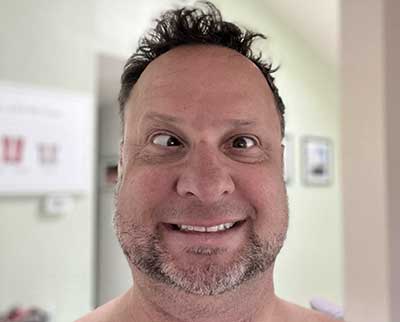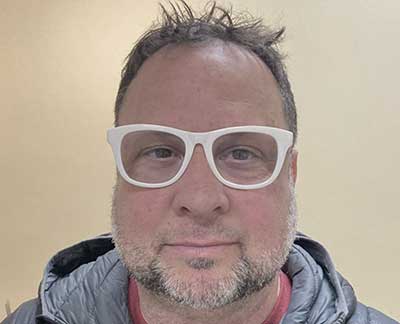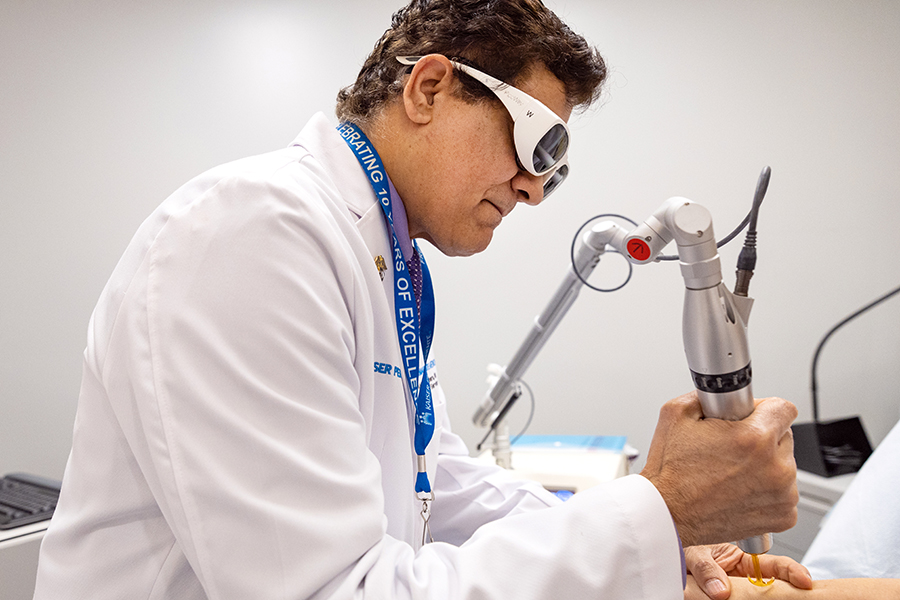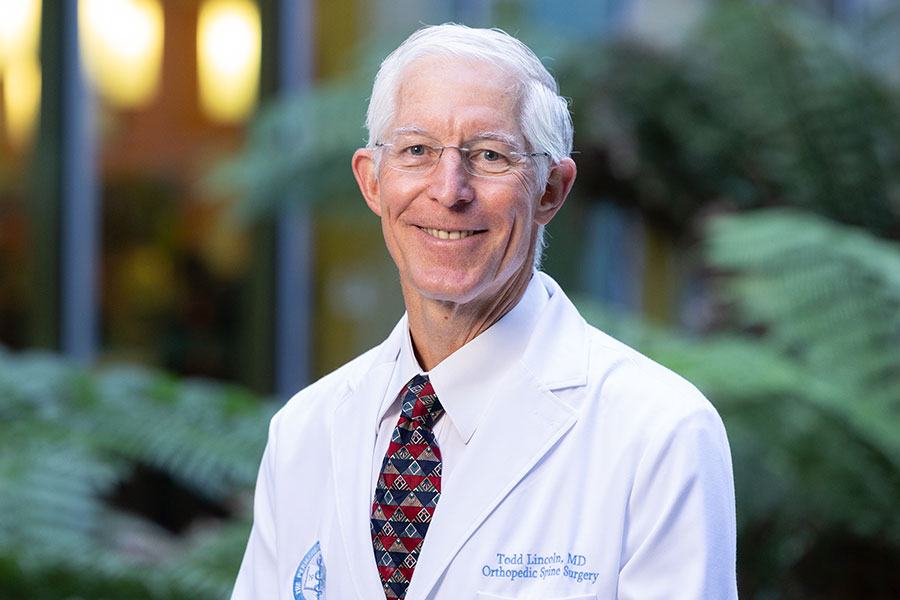January 12, 2024
For most of his life, 49-year-old Kyle Emard saw the world in an unusual way. He suffered from strabismus, a condition that caused his eyes to cross.
When Emard was born, his eyes looked straight ahead. But by the time he was 5 years old, his eyes began to turn inward. Emard could see well out of each eye individually, but he was unable to use his eyes together with adequate depth perception.
He declined surgery for many years until last year, when he met Daniel Greninger, MD, an ophthalmologist with The Permanente Medical Group at Kaiser Permanente Antioch.

Emard, before his surgery
“Strabismus is an eye misalignment problem,” said Dr. Greninger, who corrected Emard’s medical condition with surgery. “In Kyle’s case, this was most likely attributed to accommodative esotropia – a condition where a person’s eyes turn in excessively while trying to focus.”
According to Dr. Greninger, the biggest issue for Emard was the appearance of his strabismus – his large esotropia made it appear as if he were looking to the side of people in conversation.
A surgery in millimeter precision
Strabismus is an eye muscle issue that is commonly caused in adults by stoke, head trauma, thyroid eye disease, tumors, and untreated childhood strabismus.
“Specifically, there are six muscles that are attached to the eye and enable the eye to move in different directions,” Dr. Greninger explained. “With strabismus, either the muscles themselves are not functioning correctly, or the brain’s control of the eye muscles is off, and it doesn’t allow the muscles to work in sync.”
The intricate procedure to fix the eye misalignment is managed by the doctor’s hands, using delicate surgical instruments. During the surgery, an eyelid speculum is inserted first. The doctor makes a small incision over the eye, finds the eye muscle, and detaches the muscle with surgical scissors to move it into a new position. All of this is performed under general anesthesia, so the patient doesn’t feel anything during surgery.
Strabismus surgery is usually performed by an ophthalmologist who has completed a fellowship in pediatric ophthalmology and adult strabismus. There are only 1,000 specialists of this type of surgery in the United States, and Dr. Greninger is one of 8 specialists working for Kaiser Permanente in Northern California.
Grateful for the life-changing surgery
Although Emard says he was not bullied growing up, his eyes were always a topic. People often didn’t think he was looking directly at them.
“People would ask me what was wrong with my eye because they thought I was blind,” he remembered. “During conversations, people would sometimes look past me because they weren’t sure where to look. But the other kids were nice to me growing up. I was social — I played football and went snow skiing, snowboarding, and dirt biking.”

Emard, after surgery
Emard’s mother urged him to have the strabismus surgery for many years. When she passed away a few years ago, he decided to reconsider surgery since technology had improved and he was ready. His 15-year-old son also encouraged him to have the corrective strabismus surgery. When he met Dr. Greninger, Emard, who is also deaf, finally felt comfortable.
“I always try to put myself in the patient’s shoes,” Dr. Greninger said. “Patients are often scared of having surgery, especially surgery on their eyes. I imagine being deaf, it’s even scarier to think of surgery on your eyes when you rely on vision to communicate. It was brave of Kyle to make the decision to have this surgery.”
The 1.5-hour surgery was successful. In fact, it was life changing.
“I feel so good today, and I’m happy all the time,” he said. “I now see life in a different way, and people don’t wonder what’s wrong with my eyes. I’m so grateful to Dr. Greninger for the surgery that changed my life.”
This article originally appeared in My KP.






